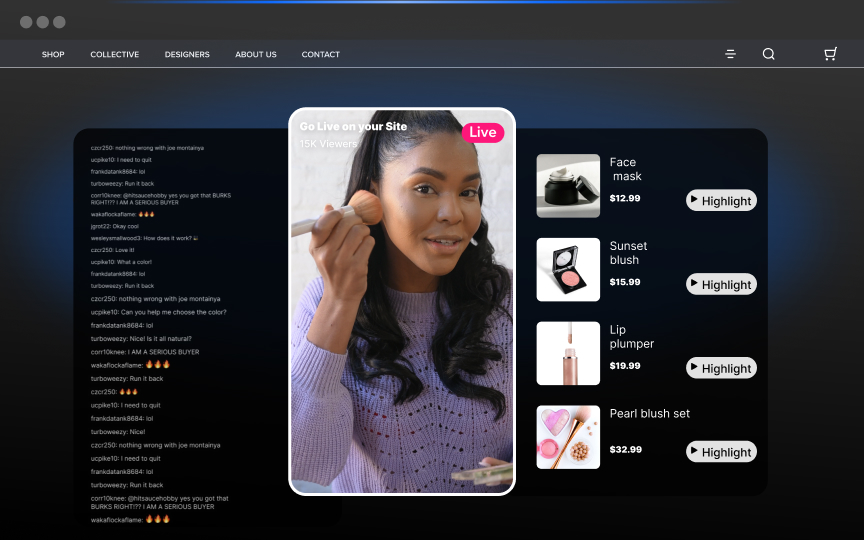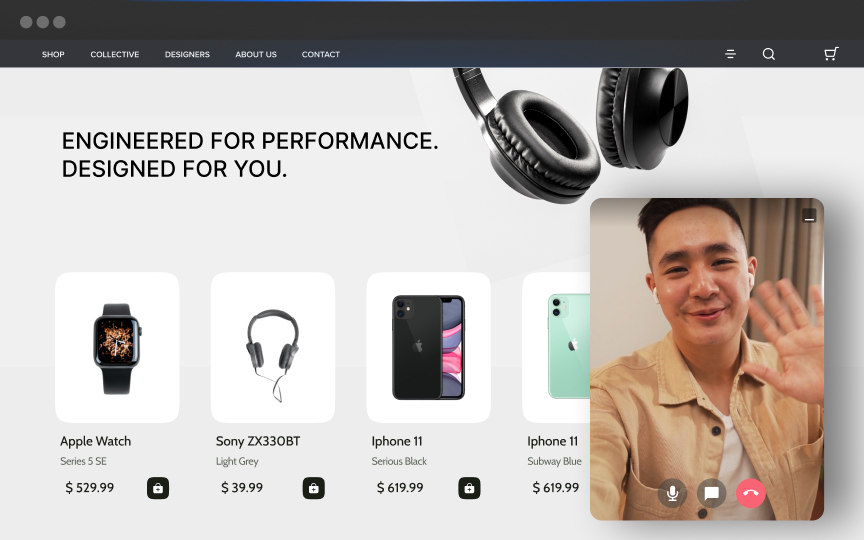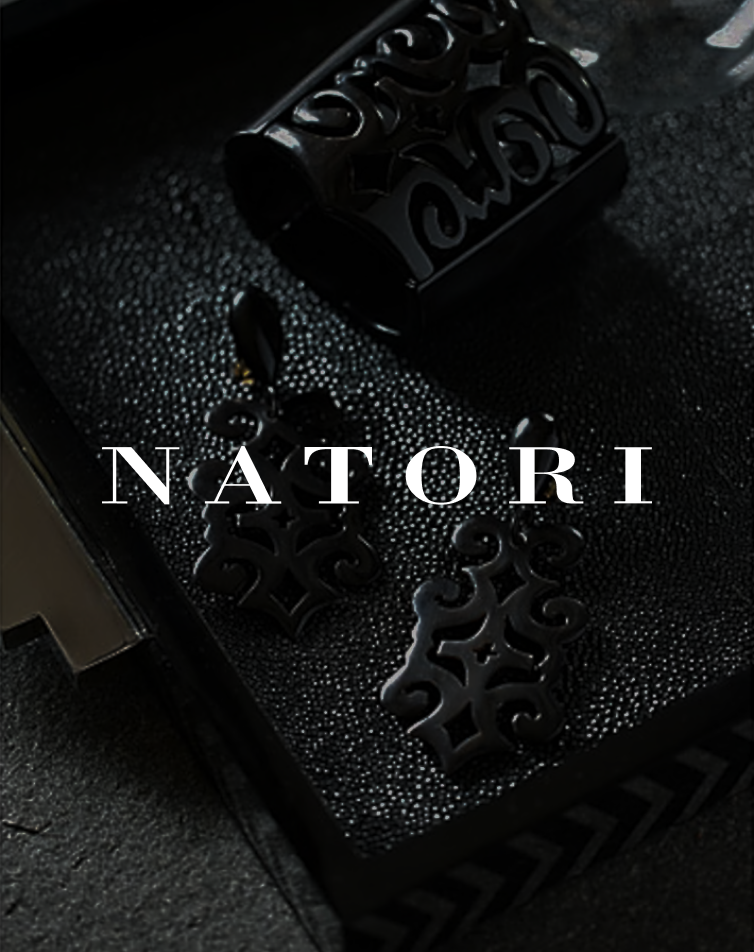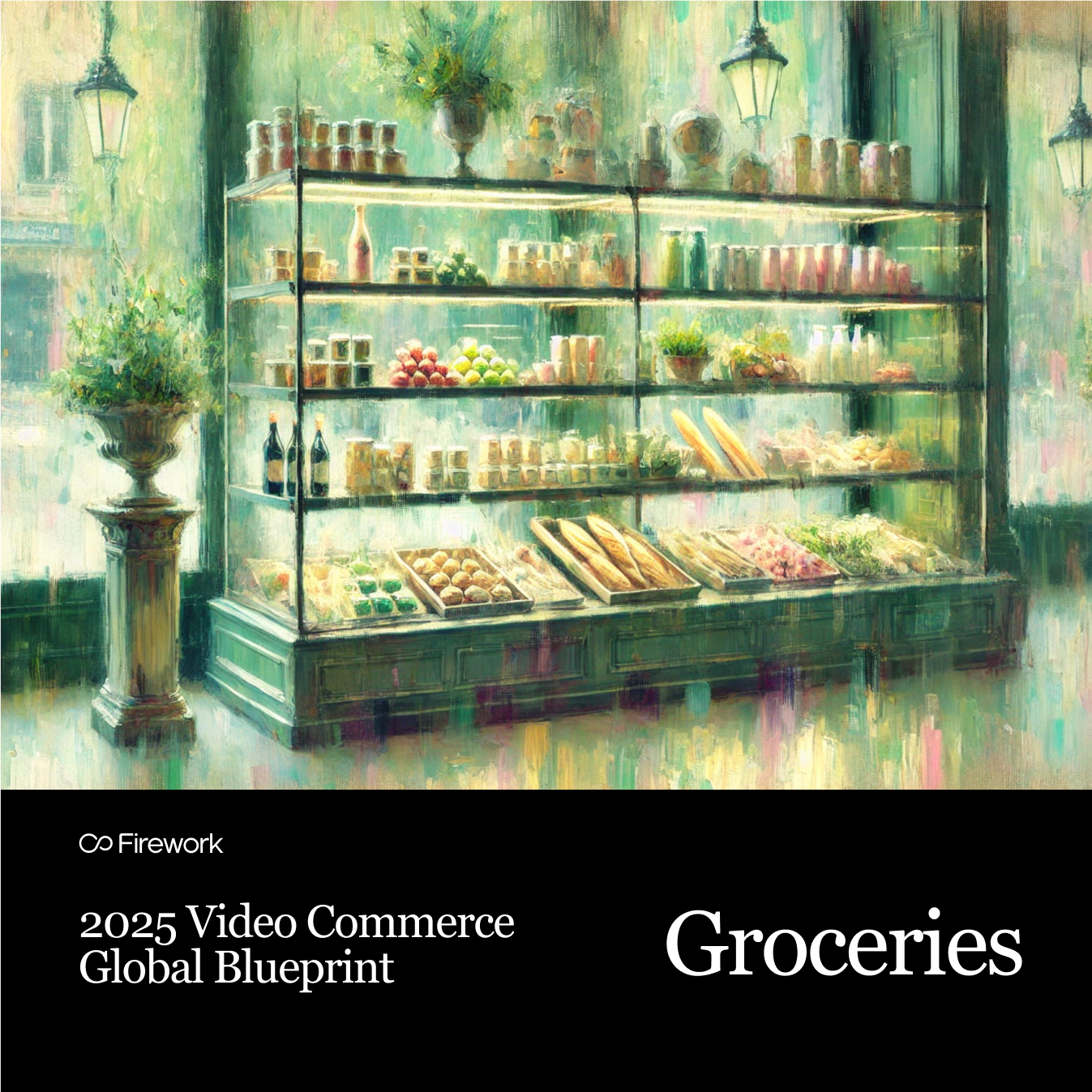Increasing Sales with AI Video: Proven Strategies Being Used by Top Brands
The marketing world is undergoing a revolutionary transformation as AI video usage surges from 18% to 41% in recent years. This shift isn't merely a passing trend but represents a fundamental change in how brands connect with customers. AI video creation is redefining marketing possibilities, enabling businesses to produce high-quality, personalized content with unprecedented efficiency while driving measurable sales growth.
The Business Case for Using AI Video Creation to Drive Sales
Creating impactful video content presents numerous challenges. Traditional production can drain budgets, consume time, and prove nearly impossible to scale—a perfect storm for brands trying to use video effectively to drive sales.
This is exactly where AI-powered video creation shines. The case for implementing it is compelling:
Dramatic Cost and Time Reduction
The immediate win with AI video is how it slashes production costs while maintaining quality. Traditional video involves:
- Hiring talent and crew
- Booking locations
- Scheduling complex shoots
- Extensive post-production work
Companies using AI report up to 80% reductions in production times and costs through advanced automation. This frees resources for creative strategy rather than getting bogged down in operational details, directly impacting sales efficiency.
Addressing Sales Funnel Pain Points
AI video creation directly fixes critical issues that have limited video marketing effectiveness in driving sales:
- Content Creation Bottlenecks: Teams produce multiple video variations simultaneously instead of waiting weeks for a single production.
- Personalization at Scale: Content can be tailored for different audience segments without multiplying costs, enhancing customer engagement and sales conversions.
- Testing and Optimization: Marketers quickly create different versions to test messaging and visuals, getting to optimal performance faster, which can lead to increased sales.
Expanding Market Reach
AI's scalability lets brands target broader markets efficiently. E-commerce platforms use AI-generated product videos to personalize shopping experiences across consumer segments, boosting conversion rates significantly.
Quick localization for different regions, languages, and cultural contexts means businesses can expand into new markets with properly tailored messaging—something traditional video production makes cost-prohibitive. This expansion capability demonstrates how brands are using AI video creation to drive sales globally.
The ROI comparison consistently favors AI approaches. Beyond lower initial costs, the ability to rapidly test, refine, and personalize content drives higher engagement and conversion rates, making a strong case for adoption to drive sales.
How AI Video Creation Is Transforming the Video Production Process
Video production has changed dramatically thanks to AI technologies. What once demanded extensive resources, specialized talent, and weeks of work can now happen in a fraction of the time with impressive results. Here's how AI video creation is revolutionizing video production and helping businesses drive sales.
Core AI Technologies Powering Video Creation
Two key technologies lead the AI video revolution:
- Generative Adversarial Networks (GANs): Two neural networks working together—one creates content while the other judges its authenticity. This powers realistic visuals and generates entirely new video scenes from text prompts.
- Natural Language Processing (NLP): Enables machines to understand human language, crucial for auto-generating scripts, analyzing audience feedback, and optimizing video content for search.
Together, these technologies have redefined video production possibilities, enabling unprecedented automation and personalization that drive sales growth.
Before vs. After: The Evolution of Video Production Workflows
Traditional Workflow:
- Concept development and scriptwriting (1-2 weeks)
- Pre-production planning and casting (1-2 weeks)
- Video shooting with full crew (1-3 days)
- Post-production editing and effects (2-3 weeks)
- Review cycles and revisions (1-2 weeks)
- Final delivery and distribution (1 week)
AI-Enhanced Workflow:
- Input creative brief and target audience parameters
- AI generates script options and storyboards
- Select AI-generated avatars or combine with human talent
- AI renders scenes, effects, and transitions
- Review and request AI-powered adjustments
- Automatic formatting for multiple platforms and distribution
This shift has created remarkable efficiency gains, with businesses reporting up to 80% reductions in production times and costs through advanced video automation. These efficiencies allow brands to produce more content that drives sales.
Key Capabilities Enabling Sales Growth
Personalization at Scale
Advanced AI tools have transformed how brands personalize content. You can describe a scene and generate immersive videos tailored to specific cultural contexts, languages, and regional preferences, enhancing customer connection and sales.
A cosmetics brand used AI to create diverse campaign videos featuring lavender fields for French audiences, tropical forests for Asian markets, and minimalist aesthetics for U.S. customers—all from the same creative brief. This personalization demonstrates how brands are using AI video creation to drive sales across different markets.
Multi-Variant Testing
AI makes creating and testing multiple video variations simple:
- Generate dozens of versions with different messaging, visuals, or calls-to-action
- Automatically track performance metrics across versions
- Quickly identify winning elements and optimize campaigns
This lets marketers make decisions based on data rather than hunches, significantly improving campaign results and driving sales.
Rapid Adaptation to Market Trends
AI video generation speed lets brands capitalize on emerging trends almost instantly. What took weeks now happens in hours or minutes.
A major beverage company produced one base video and 32 local variations tailored for different cultural contexts. This campaign reached millions, increased brand affinity, and showed exceptional ROI from AI-generated personalization, directly impacting sales.
These AI capabilities help brands create more relevant, engaging video content that resonates with specific audiences while maintaining cost efficiency and speed. The result? More effective marketing that drives measurable improvements in engagement, conversion, and sales.
5 Powerful Ways Brands Are Using AI Video Creation to Drive Direct Sales
AI video is changing how brands connect with customers and boost sales. It enables personalization, engagement, and scalability that traditional video can't match. Research confirms AI video strategies deliver measurable improvements in engagement and conversion rates, making them essential for maximizing marketing ROI.
These five strategies represent the most effective ways brands are using AI video creation to drive sales. Each combines cutting-edge tech with smart marketing to create content that converts viewers into customers. The results speak for themselves across industries and business sizes.
1. Hyper-Personalized Product Demonstrations
Brands create custom product demo videos tailored to individual customers. By analyzing browsing history, purchase patterns, and demographics, AI generates videos showcasing the most relevant products and features for each viewer.
Major eyewear retailers use virtual try-on technology so customers can see how different frames look on their faces, creating a personalized shopping experience that bridges online and in-store shopping.
This personalization builds deeper emotional connections. Research shows these tailored experiences can drive up to 20% higher conversion rates compared to standard videos, demonstrating how brands are using AI video creation to drive sales.
Implementation involves connecting customer data systems with advanced video commerce platforms that dynamically adjust content based on user profiles. This targeting ensures ads reach prospects most likely to convert, maximizing efficiency and ROI.
2. Dynamic Video Retargeting Campaigns
AI automatically generates customized retargeting videos based on browsing behavior. When someone views products without purchasing, AI creates tailored follow-ups featuring the specific items they showed interest in.
Personalized beauty brands reconnect with shoppers who abandon their customization process. They create dynamic videos showcasing the specific formulations customers were building, along with relevant testimonials.
AI analyzes viewer data and adapts content in real-time, adjusting everything from product focus to messaging tone based on engagement metrics to resonate with individual viewers and drive sales.
Implementation typically involves API connections with e-commerce platforms to pull browsing data into AI video tools. Research shows personalized retargeting videos significantly improve campaign efficiency, with some brands reporting up to a 35% increase in click-through rates compared to static ads.
3. Scalable Influencer-Style Content
AI influencers and virtual ambassadors are changing content creation. Rather than coordinating with human influencers for every campaign, brands create consistent, on-brand content that mimics engaging influencer videos but at scale.
Athletic apparel companies use this approach in their campaigns, creating dynamic AI-generated content that maintains their energetic style while personalizing elements for different audiences. This produced hundreds of video variations from a single creative concept, showing how brands are using AI video creation to drive sales through scalable influencer-style content.
Research shows AI tools help brands adapt video narratives for multiple audiences while maintaining consistent messaging. The benefit isn't just scale—it's cost efficiency. Traditional influencer campaigns versus AI alternatives reveal production costs reduced by up to 50% while improving engagement and lead generation.
This approach lets teams focus on creative strategy rather than operations, resulting in more innovative campaigns with better performance and increased sales.
4. Interactive Shoppable Video Experiences
AI enables dynamic shoppable elements that adapt based on viewer behavior. These interactive experiences let customers purchase products directly within videos, shortening the path to purchase.
Beauty retailers lead with their Virtual Artist platforms, combining AI and augmented reality so customers can virtually try makeup through facial recognition. The system offers personalized recommendations based on facial features and skin tones, creating an immersive shopping experience that drives direct sales.
Firework's shoppable video technology has advanced interactivity in videos, enabling content where viewers buy products without leaving. Platforms like TikTok and Instagram have embraced this, streamlining the shopping experience.
The impact is substantial, with studies showing these interactive videos accelerate consumer decision-making and directly increase sales. Shoppable videos create a seamless path from discovery to purchase, eliminating friction points that might otherwise lead to abandoned carts.
5. Automated Product Update Announcements
Brands with frequent product updates can use AI to create consistent, engaging announcement videos. This ensures timely communication while maintaining production quality across numerous releases.
Technology companies benefit from this for their regular product launches and software updates. AI video generation allows them to create localized versions for different global markets, addressing various languages, cultural preferences, and regional features.
Research confirms AI excels at scaling video production globally while maintaining consistency. This approach reduces production costs and time—businesses using AI report up to 80% reductions in production times and costs through video automation.
Compared to traditional announcements, personalized AI videos drive higher viewer retention and conversion rates. Content that resonates with specific audiences builds stronger brand affinity and customer relationships, ultimately driving more direct sales from product announcements.
Platform-Specific AI Video Strategies to Drive Sales
Each platform has unique characteristics and audience behaviors. Here's how to tailor your AI video approach for maximum impact and drive sales across major platforms.
TikTok: Short-Form AI Video Dominance
TikTok's growth has made short-form video essential for marketers. AI tools excel here by creating engaging content quickly for TikTok's fast-paced environment.
Research shows short-form videos dominate social media engagement, with AI making production scalable. For best results on TikTok:
- Use AI to generate multiple short video variations quickly
- Add AI-generated captions to boost accessibility and engagement
- Use AI for A/B testing to find your best-performing content
One retail startup saw a 25% increase in conversion rates after implementing AI-powered short-form videos targeted at TikTok audiences, demonstrating how brands are using AI video creation to drive sales on this platform.
YouTube: Enhancing Long-Form Educational Content
While TikTok excels at short content, YouTube remains king for longer, educational videos where AI can enhance production value and personalization.
AI helps brands create comprehensive content that maintains viewer interest throughout. Major beverage companies showed this by using AI to produce dozens of adaptations of a single video for different regional and cultural preferences, dramatically increasing engagement and brand affinity, which drives sales.
For YouTube success:
- Personalize educational content for different audience segments
- Create multiple cultural adaptations of core videos
- Use AI analytics to optimize length and content based on retention data
Instagram/Facebook: Social Selling Through AI Stories and Reels
Instagram and Facebook excel at social selling, with AI-generated stories and reels providing the perfect medium. Their visual-first nature makes them ideal for AI-enhanced content that drives purchases.
AI now enables shoppable content where viewers buy products directly within videos, blending content with e-commerce for a seamless experience that drives sales. Firework's digital showroom solution enhances this experience with immersive, shoppable content optimized for these platforms.
For Instagram and Facebook success:
- Create AI-generated product demonstration videos
- Add interactive, shoppable elements to your AI videos
- Tailor visual aesthetics to match platform-specific trends
Email Marketing: Personalized Video Embeds
Email remains powerful, especially when enhanced with personalized video. A retail startup that sent personalized product videos via email saw a 35% increase in click-through rates compared to standard campaigns, directly impacting sales.
AI lets you create personalized video content at scale that embeds directly in emails, giving recipients tailored experiences that drive conversions.
To maximize email video performance:
- Create personalized product recommendation videos based on past purchases
- Segment your audience with custom video content for each segment
- Test different video thumbnails to optimize open rates
For a truly effective strategy, consider how these platform-specific approaches can work together for a cohesive brand experience while using each platform's unique strengths to drive sales.
Measuring the Sales Impact of AI Video Content
AI video is transforming marketing, but understanding its true impact requires careful measurement. Here's how to evaluate your AI video campaigns using key metrics and analytics to assess their effectiveness in driving sales.
Key Performance Indicators for AI Video Effectiveness
Focus on these critical metrics when measuring AI video's impact on sales:
- Engagement Metrics: AI videos consistently show higher engagement, with studies reporting 30% longer watch times. This increased engagement translates directly to stronger brand awareness and recall, which can drive sales.
- Conversion Rates: The most important metric—AI-produced explainer videos on landing pages have been shown to increase purchase decisions by 20%. This significant lift shows AI video's power to influence buyer behavior at critical decision points.
- Return on Investment: Compare AI video production costs (typically lower than traditional methods) against generated revenue to calculate true ROI. Many brands report substantially higher returns due to both lower costs and improved performance in driving sales.
Attribution Models for Multi-Touch Customer Journeys
Understanding how AI videos contribute to complex customer journeys requires sophisticated attribution models:
- First-Touch Attribution: Identifies when AI videos introduce new customers to your brand
- Last-Touch Attribution: Measures when AI videos serve as the final touchpoint before conversion
- Multi-Touch Attribution: Weighs the influence of all video interactions across the customer journey
- Time-Decay Models: Gives more credit to video touchpoints closer to the conversion event
These models help you understand where AI videos provide the most value in your sales funnel, allowing for strategic placement and content optimization to drive sales.
Leveraging AI for Video Analytics
AI tools don't just create videos—they provide deeper insights into viewer behavior:
- Engagement Duration: Track precisely how long viewers watch and where they lose interest
- Drop-off Points: Identify exactly where viewers abandon videos to refine content
- Scene-Level Analysis: Determine which specific moments resonate most with your audience
A consumer electronics brand used AI analytics to study audience engagement patterns. By restructuring their video narrative pacing based on these insights, they increased audience retention by 35%, leading to higher sales conversions.
These analytics capabilities help marketers continuously refine content strategies, creating an improvement cycle that traditional video production methods can't match, ultimately driving sales.
Overcoming Implementation Challenges in AI Video Creation
Implementing AI video creation presents several significant challenges. Understanding these hurdles and their solutions is key to successfully using AI video creation to drive sales.
Technical Complexities
Training AI systems for video production demands significant computing power and can face technical difficulties. These networks require substantial resources for realistic outputs.
Common issues include:
- Limited varieties of outputs
- Training instability requiring constant refinement
- High computational requirements for quality results
Many brands solve this by using established platforms rather than building in-house solutions. Firework's AVA (Automated Video Assistant) provides a robust infrastructure that handles the complex technical requirements while delivering high-quality results.
Content Quality Concerns
AI-generated content quality needs careful monitoring to prevent inconsistencies in brand messaging. When these tools create videos or generate scripts, they can sometimes produce content that doesn't perfectly align with brand standards.
To address this:
- Test rigorously across diverse audience segments
- Create review processes to catch potential issues
- Continuously update algorithms with balanced training data
Companies increasingly employ diverse review teams to ensure content remains culturally appropriate and on-brand.
Ethical Considerations
The potential misuse of AI-generated videos—particularly deepfakes—raises serious ethical concerns. Marketing teams must establish clear guidelines around transparency and appropriate usage.
Best practices include:
- Always disclosing when content is AI-generated
- Avoiding the "uncanny valley" effect that can alienate viewers
- Ensuring compliance with emerging AI legislation
Leading AI video platforms implement strict content policies to prevent misuse and maintain ethical standards.
Integration with Existing Tech Stacks
A practical challenge for many organizations is integrating AI video tools with their existing marketing technology. Successful integration strategies include:
- Starting with script generation before moving to full video production
- Using API-friendly tools that connect with existing CRM and marketing automation systems
- Implementing phased approaches that gradually incorporate AI capabilities
By addressing these challenges methodically, marketing teams can successfully implement AI video strategies that maintain both technical excellence and ethical standards, ultimately driving sales.
Fashion and Apparel A Prime Industry for AI Video Transformation
The fashion and apparel industry stands at the forefront of the AI video revolution. With its visual nature and constant need for fresh content, this sector is perfectly positioned to benefit from AI-powered video creation.
According to the 2025 Fashion & Apparel Video Commerce Playbook, brands that implement AI-powered video strategies see significant advantages:
- Virtual Try-Ons: AI enables customers to visualize products on themselves without physical fitting rooms
- Seasonal Collection Launches: Create dozens of video variations for different demographics and regions
- Sustainability Storytelling: Effectively communicate brand values through compelling visual narratives
- Influencer-Style Content: Scale authentic-feeling content without the logistics of multiple influencer partnerships
Fashion brands implementing AI video report 3.2x higher engagement rates and 27% higher average order values compared to traditional static imagery.
Ready to Transform Your Video Marketing Strategy?
AI video creation isn't just changing how brands produce content—it's revolutionizing how they connect with customers and drive sales. The efficiency gains, personalization capabilities, and improved performance metrics make a compelling case for adoption.
By implementing the strategies outlined in this article, your brand can:
- Dramatically reduce video production costs and timelines
- Create more personalized content that resonates with specific audiences
- Test and optimize video performance with unprecedented speed
- Scale your video marketing across platforms and regions
- Measure and improve the direct sales impact of your video content
Take the Next Step
Ready to leverage AI video to drive sales for your business? Firework's comprehensive video commerce platform provides everything you need to create, optimize, and measure AI-enhanced video content that converts viewers into customers.
Our team of experts can help you develop a customized strategy that addresses your specific business challenges and capitalizes on the unique opportunities in your industry.
Request a demo today to see how Firework can transform your video marketing and drive measurable sales growth.
Unlock Exclusive Insights
By submitting this form, you agree to Firework's privacy policy and consent to receive personalized marketing communications. You can unsubscribe at any time.

























.jpg)




